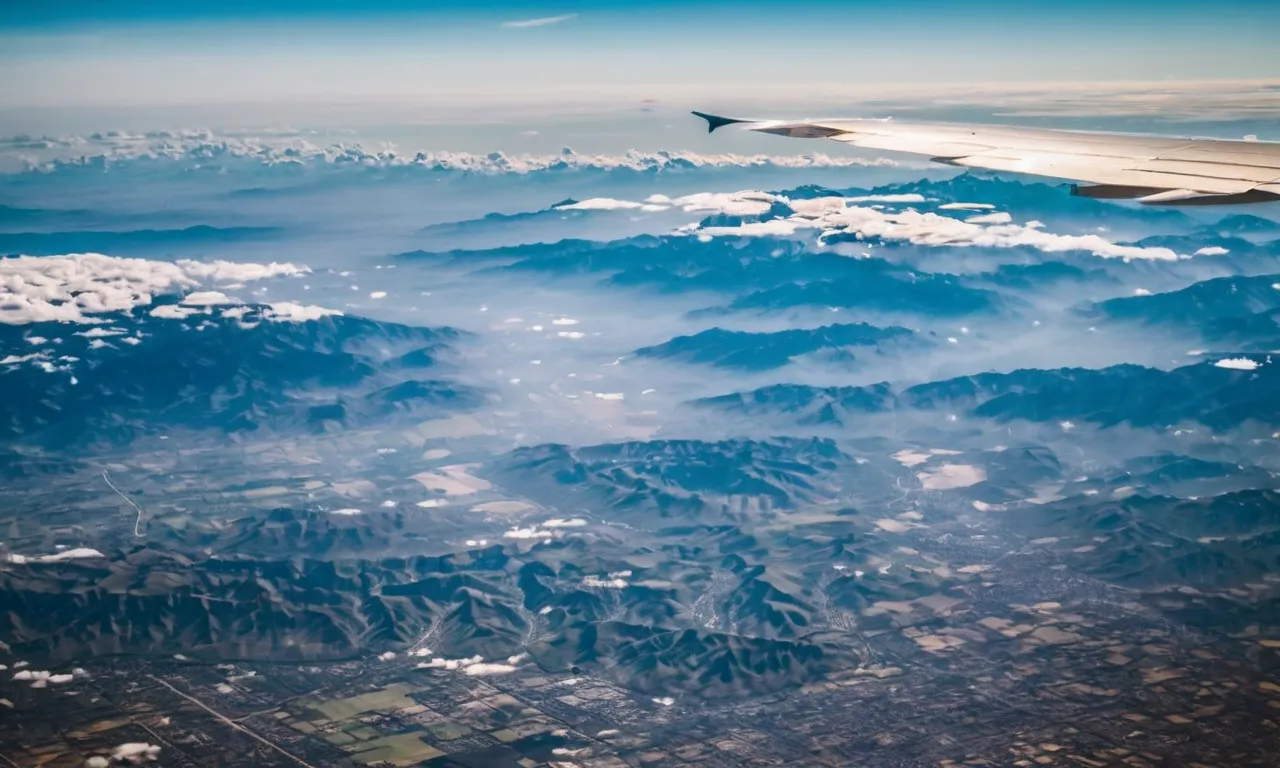How Many Planes Are In The Sky At One Time?
At any given moment, there are thousands of aircraft in the skies above us. From commercial airliners carrying hundreds of passengers to small private planes with just a pilot on board, our skies are full of aircraft crisscrossing countries and continents.
If you’re short on time, here’s a quick answer: there are typically around 9,000 commercial planes flying at one time globally.
In this comprehensive guide, we will explore key details around how many planes are in the sky at any given time. We’ll look at commercial versus general aviation, trends over time, differences in air traffic density in various regions around the world, impacts from external factors like weather and holidays, and more.
Estimates for Commercial Passenger Planes in Flight Globally
Have you ever wondered how many planes are in the sky at any given time? The answer may surprise you. While it’s difficult to know the exact number, there are some estimates available that give us a general idea of the scale of air traffic around the world.
Rough Estimate of 9,000 Planes Flying Currently
According to aviation experts, there are approximately 9,000 commercial passenger planes in flight at any given time. This number includes both large and small aircraft operated by various airlines. While this estimate may fluctuate depending on the time of day and other factors, it gives us a baseline to understand the magnitude of air travel.
Breakdown by World Region
The distribution of planes in the sky is not evenly spread across the globe. The majority of air traffic is concentrated in North America, Europe, and Asia. These regions are home to major international airports and serve as key transit hubs for passengers traveling between continents.
However, it’s important to note that air traffic patterns can vary based on factors such as population density, economic activity, and tourism.
In North America, for example, there are busy air corridors connecting major cities like New York, Los Angeles, and Chicago. Europe also sees a high volume of air traffic, with major airports in cities like London, Paris, and Frankfurt.
Asia, particularly in countries like China and India, is experiencing rapid growth in air travel as well.
Variation by Time of Day and External Factors
The number of planes in the sky can vary throughout the day and is influenced by external factors. During peak travel times, such as early morning and late evening, the number of planes in flight tends to increase.
This is when many people are commuting to and from work or traveling for business or leisure.
External factors such as weather conditions and air traffic control regulations also play a role in determining the number of planes in the sky. Inclement weather can lead to flight delays and cancellations, reducing the overall number of planes in flight.
Similarly, air traffic control may restrict the number of planes in certain airspace to maintain safety and avoid congestion.
It’s important to remember that these estimates are just rough approximations, and the actual number of planes in the sky at any given time can vary. Nevertheless, the scale of global air traffic is truly remarkable, with thousands of planes soaring through the skies, connecting people and places all around the world.
General Aviation Aircraft Totals Globally
General aviation includes all non-military and non-commercial aircraft. These are the small planes that you might see flying overhead or at your local airport. While commercial airliners are often the focus of attention, general aviation actually makes up a significant portion of the total number of planes in the sky at any given time.
Global Fleet Size
The exact number of general aviation aircraft in the world is difficult to determine due to variations in reporting and registration processes across different countries. However, according to the General Aviation Manufacturers Association (GAMA), as of 2020, there were approximately 214,000 general aviation aircraft registered worldwide.
Regional Breakdown
The distribution of general aviation aircraft varies by region. The United States has the largest number of general aviation aircraft, with over 200,000 registered planes. Europe also has a significant general aviation fleet, with countries like Germany, France, and the United Kingdom contributing to the total.
Other regions, such as Asia, Africa, and South America, have smaller but growing general aviation sectors.
Types of General Aviation Aircraft
General aviation includes a wide range of aircraft types, from small single-engine planes to larger business jets. These aircraft are used for various purposes, including personal and recreational flying, business travel, aerial photography, flight training, and medical transportation.
Some popular types of general aviation aircraft include:
- Cessna 172: One of the most widely-used training aircraft.
- Piper PA-28: Known for its reliability and versatility.
- Beechcraft Bonanza: A popular choice among private pilots.
- Gulfstream G650: A high-performance business jet.
Impact on Air Traffic
While general aviation aircraft may not be as large or as numerous as commercial airliners, they still contribute to air traffic. Depending on the location and time of day, you may see a mix of general aviation and commercial aircraft sharing the skies.
It’s important to note that general aviation aircraft typically fly at lower altitudes and slower speeds compared to commercial airliners. This helps to minimize conflicts and maintain safe separation between different types of aircraft.
Understanding the number and types of general aviation aircraft in the sky at one time provides insight into the overall complexity and diversity of air traffic worldwide. So the next time you look up and see a small plane flying overhead, remember that it’s just one of many contributing to the vibrant world of general aviation.
Summary of Total Aircraft Aloft Worldwide at Any Given Time
Have you ever looked up at the sky and wondered how many planes are flying at any given moment? The answer might surprise you. With the increasing popularity of air travel, the number of planes in the sky has been steadily rising over the years.
A combination of commercial, private, and military aircraft all contribute to the bustling activity that happens above us every day.
Commercial Aircraft
Commercial airlines play a significant role in the number of planes in the sky. According to the International Air Transport Association (IATA), there were over 23,000 commercial aircraft in service globally in 2020.
These planes are used to transport passengers and cargo to various destinations around the world. The busiest air routes, such as those between major international hubs like London, New York, and Dubai, can see hundreds of flights operating simultaneously.
Private Aircraft
In addition to commercial airlines, private aircraft also contribute to the number of planes aloft. Private jets and small planes are commonly used by individuals and businesses for personal travel or charter services.
While the exact number of private aircraft in the sky is difficult to determine, estimates suggest that there are tens of thousands of private planes flying at any given time.
Military Aircraft
Military aircraft, including fighter jets, transport planes, and reconnaissance aircraft, also take to the skies regularly. These aircraft are used for national defense purposes, training exercises, and various missions.
While the number of military planes in the sky is not publicly available, it is safe to assume that their presence further adds to the total number of planes aloft.
Total Number of Aircraft
When we consider the combined total of commercial, private, and military aircraft, it becomes clear that the sky is a busy place. While it is challenging to calculate the exact number of planes aloft at any given time, estimates suggest that there could be tens of thousands of aircraft flying simultaneously around the world.
This number can vary depending on factors such as time of day, location, and air traffic patterns.
It’s important to note that these numbers are constantly changing as planes take off and land throughout the day. Air traffic control systems and advanced technology help manage the flow of aircraft and ensure safe skies for all.
So the next time you gaze up at the sky, remember that you are witnessing a small part of the incredible world of aviation.
Conclusion
In conclusion, while it is difficult to determine the exact number with full accuracy, best estimates indicate approximately 9,000 commercial passenger airplanes and tens of thousands of additional general aviation aircraft flying globally at any moment.
With air travel continuing to increase around the world, we can expect skies to become even busier going forward. Next time you take to the air, take a moment to appreciate being one of the thousands of planes aloft and making your way safely through the intricate air traffic control networks guiding flights every second.








